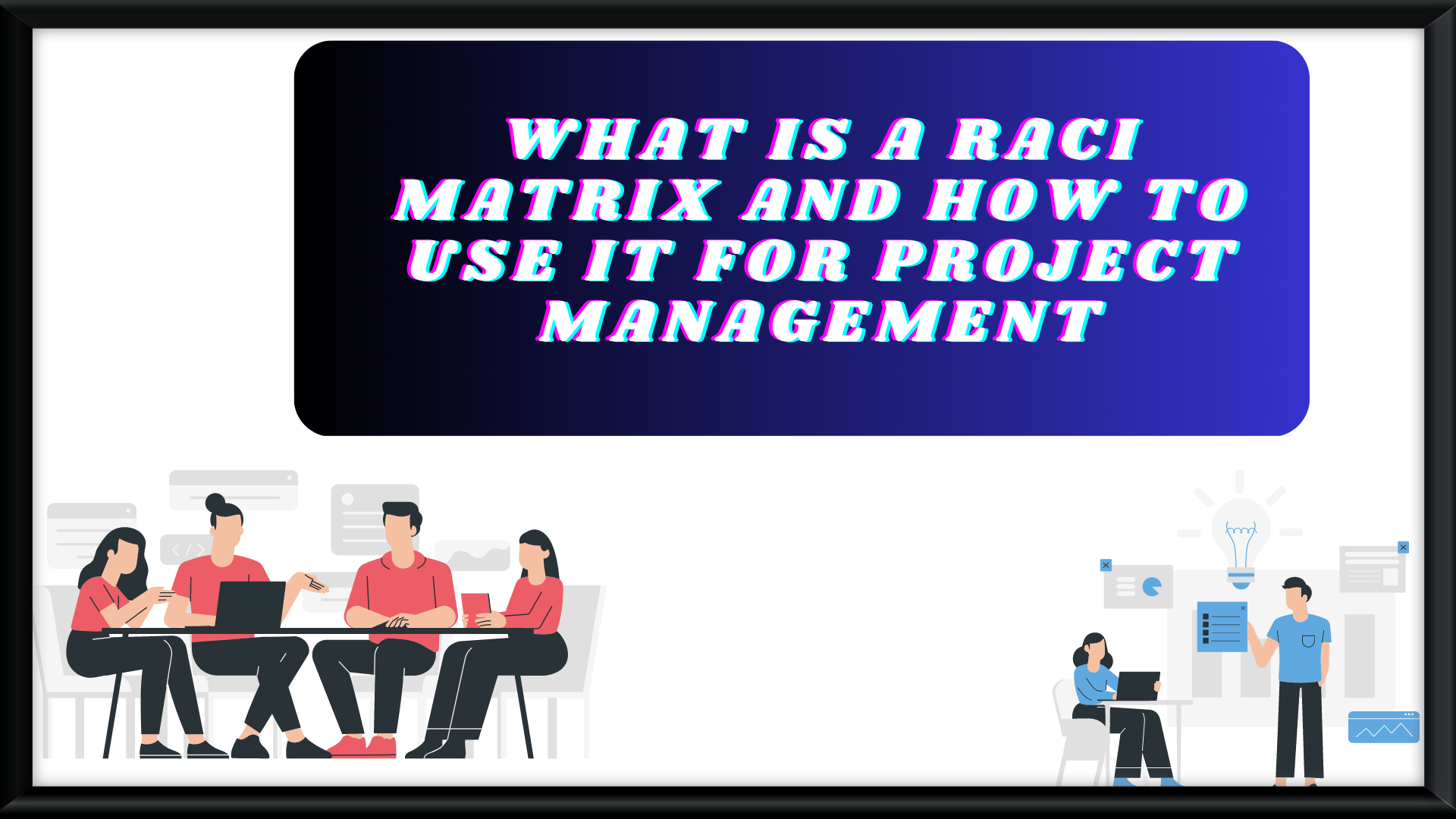The RACI matrix is a tool used in project management to clarify roles and responsibilities within a team. It helps to ensure that everyone understands their tasks and how they fit into the overall project. In this post, we’ll explain what the RACI matrix is, how it works, and how it can be used to improve team collaboration and project outcomes.

What is a RACI matrix?
A RACI matrix is a project management tool that helps to clarify roles and responsibilities within a team. The acronym RACI stands for Responsible, Accountable, Consulted, and Informed. Each task or activity in a project is assigned a RACI code, which indicates who is responsible for completing the task, who is accountable for its success, who needs to be consulted, and who needs to be informed. The RACI matrix helps to ensure that everyone on the team understands their roles and responsibilities, which can improve team collaboration and project outcomes.
How does a RACI matrix work?
A RACI matrix works by assigning a RACI code to each task or activity in a project. The code indicates who is responsible for completing the task (R), who is accountable for its success (A), who needs to be consulted (C), and who needs to be informed (I). By clarifying roles and responsibilities, the RACI matrix helps to improve team collaboration and project outcomes. It ensures that everyone on the team understands their role in the project and can work together effectively to achieve the project goals.
How to create a RACI matrix.
To create a RACImatrix, start by listing all the tasks or activities involved in the project. Then, assign a RACI code to each task or activity. The RACI code should be based on the following criteria:
– Responsible (R): Who is responsible for completing the task or activity? This person is the one who will do the work and ensure that it is completed on time and to the required standard.
– Accountable (A): Who is accountable for the success of the task or activity? This person is ultimately responsible for ensuring that the task or activity is completed successfully. They may delegate the work to others, but they are still responsible for the outcome.
– Consulted (C): Who needs to be consulted before the task or activity can be completed? This person may have valuable input or expertise that is needed to ensure the success of the task or activity.
– Informed (I): Who needs to be informed about the progress or outcome of the task or activity? This person may not be directly involved in the task or activity, but they need to be kept up-to-date on its progress or outcome.
Once you have assigned a RACI code to each task or activity, you can use the matrix to clarify roles and responsibilities, improve team collaboration, and ensure project success.
Tips for using a RACI matrix effectively.
To use a RACImatrix effectively, it’s important to ensure that everyone involved in the project understands the roles and responsibilities assigned to them. This can be achieved through clear communication and training. It’s also important to regularly review and update the matrix as the project progresses, to ensure that it remains relevant and accurate. Finally, it’s important to use the matrix as a tool for collaboration and problem-solving, rather than as a rigid set of rules. By using the matrix in this way, you can ensure that everyone is working together towards a common goal and that the project is a success.
Examples of how a RACI matrix can be used in project management.
A RACImatrix can be used in a variety of ways to improve project management and team collaboration. For example, it can be used to clarify roles and responsibilities, ensure that everyone is on the same page, and identify potential areas of conflict or confusion. It can also be used to track progress and ensure that tasks are completed on time and to a high standard. Additionally, it can be used to identify areas where additional resources or support may be needed, and to ensure that everyone is working towards the same goals and objectives. Overall, the RACI matrix is a powerful tool for improving project management and team collaboration, and can be used in a wide range of contexts and situations.

Business Analyst , Functional Consultant, Provide Training on Business Analysis and SDLC Methodologies.
